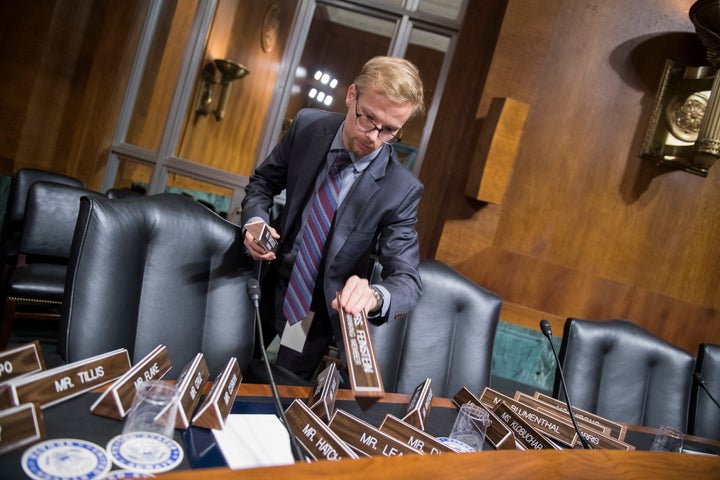
Women working in some of the most coveted jobs on Capitol Hill face a pervasive pay gap and are underrepresented on many of Congress’ most powerful committees, a sweeping new analysis from the nonpartisan R Street Institute found.
The report, titled “Who’s On The Hill,” analyzed 2017 salary and employment data for the hundreds of people who staff the Senate and House legislative committees — and who, as a result, wield substantial behind-the-scenes power over policymaking and congressional investigations.
There were significant gaps between men and women that persisted no matter how the authors sliced and diced the data.
When workers were sorted by job category — legislative assistant, communications, senior staff — men outearned women in every category except administration. The smallest pay gap was at the senior staff level, where men earned $1,000 more per year, on average. The largest gap was in communications, where men out-earned women by roughly $15,000 per year.
When workers were sorted by committee, men out-earned women on 31 out of 38 committees analyzed. (The report, however, did not examine whether men were more likely to hold senior positions or have more prior experience relative to women.) On the Senate armed services and rules committees, and the House foreign affairs, judiciary, energy, administration and rules committees, women made at least 20 percent less than men. Women made almost 35 percent less than men on the Senate Committee on Indian Affairs and roughly 30 percent less than men on the House Committee on Science, Space and Technology.
Men and women were roughly equal in at least one regard: the overall makeup of House and Senate committees. Men represent 52 percent of committee staff in the House and 56 percent in the Senate.
But many individual committees are lopsided, with powerful ones like the banking and financial services committees, science, foreign relations, and armed services committees all dominated by men, and more administrative-focused committees like the rules committees dominated by women.
Do you know the story behind some of these numbers? We’d like to hear from you. Get in touch: scoops@huffpost.com
“More gender-diverse committees would not only create a more equitable institution from the perspective of employment and recruitment but also a more equitable policymaking process for Congress as a whole,” the report said.
Women are overrepresented on administrative-focused committees, the report found. The biggest exception is the House Appropriations Committee, one of the most powerful committees on the Hill and the committee with the fourth largest proportion of female staff.
Kneecapping its oversight abilities
The report is one of the most comprehensive analyses to date of the gender gap on the Hill. But the authors also discovered that Congress, over time, has badly hobbled its ability to develop legislation and perform oversight.
The House and the Senate have cut committee funding 34 and 27 percent from peak funding in the 111th Congress in 2009 and 2010. At the same time, the federal government has continued to grow, compounding the extent to which Congress has turned policymaking over to whichever party holds the White House.
“As a direct result of these cuts, committees have a diminished ability to hire and retain top-tier policy and investigative staff. More broadly, they reduce Congress’s ability to serve as a rigorous, independent check on the power of the Executive Branch.”
Committees in both chambers also ramped up the hiring of communications staffers relative to staffers with policy expertise, signaling a turn “to messaging campaigns rather than policy development as a valued committee output,” the report said.
The best-paid staffers on the Hill work for committees dealing with financial services, appropriations and foreign affairs, possibly because those committees compete with the lucrative private sector. The lowest paying committee is the House Oversight Committee, which offers an average annual salary of about $80,000.
In both chambers, the pay for oversight staffers, who police the executive branch, reached its lowest points when the party that controlled the White House controlled Congress, too.
